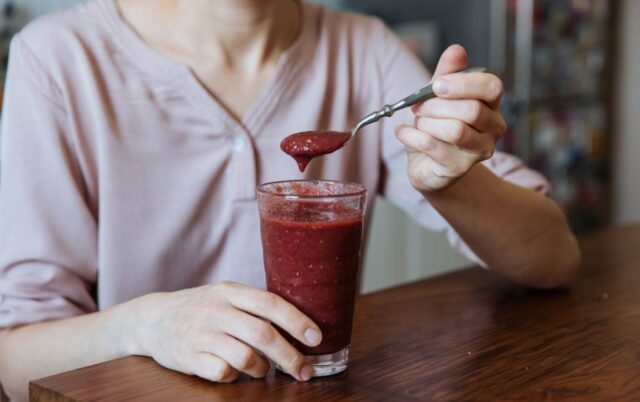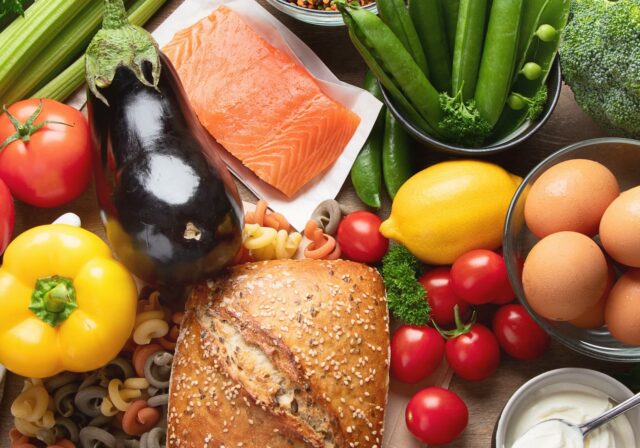
In our fast-paced world, maintaining a balanced diet can often feel like a Herculean task, especially when time and money are tight. Enter the meal replacement shake, a convenient and efficient way to nourish your body without breaking the bank or your schedule. This comprehensive guide will walk you through creating a budget-friendly meal replacement shake, ensuring you stay on track with your nutritional goals without sacrificing quality or flavor.
Understanding Meal Replacement Shakes
Before we dive into the how-to, let’s clarify what a meal replacement shake is. Unlike protein shakes, which are designed to supplement your protein intake, meal replacement shakes are crafted to substitute a full meal. They contain a balanced mix of protein, carbohydrates, fats, vitamins, and minerals to mimic the nutritional profile of a typical meal. Brands like Herbalife have popularized these shakes, offering a range of products that cater to those looking to manage their weight or simply ensure they’re getting the necessary nutrients in a convenient form. Among their offerings, the Herbalife Formula 1 shake stands out as a flagship product. It’s specifically designed to provide all the essential nutrients of a balanced meal, making it a favored choice for those seeking a reliable and nutritious meal replacement option.

The Foundation: Protein
Protein is the cornerstone of any meal replacement shake. It’s essential for building and repairing tissues, making enzymes and hormones, and is a crucial building block of bones, muscles, cartilage, skin, and blood. When selecting a protein source, consider both cost and dietary preferences or restrictions. Whey protein is a popular choice for its affordability and high biological value, meaning your body can use it efficiently.
However, plant-based proteins like pea, rice, or hemp are excellent alternatives for those following a vegetarian or vegan lifestyle. The key is to find a balance between cost, digestibility, and nutritional value.
Carbs and Fats: The Energy Providers
Carbohydrates are your body’s main energy source, while fats are vital for absorbing vitamins and providing essential fatty acids. When adding carbs to your shake, opt for whole food sources like oats, bananas, or cooked sweet potatoes. These not only thicken your shake, making it more satisfying but also provide fiber, which aids in digestion and helps keep you full longer.
Fats can be incorporated through nuts, seeds, or their butters, such as almond butter or flaxseed oil. Avocado is another excellent fat source, adding creaminess to your shake while supplying heart-healthy monounsaturated fats. Remember, a little goes a long way with fats, so use them sparingly to keep your shake’s calorie content in check.

Vitamins and Minerals: The Micronutrient Boost
To ensure your shake truly stands in for a meal, it’s crucial to include a variety of vitamins and minerals. This can be achieved by incorporating a mix of fruits and vegetables. Spinach, kale, and other leafy greens are low in calories but high in fiber, vitamins A, C, and K, as well as other minerals. Berries, mango, and pineapple provide sweetness and a hefty dose of antioxidants. For an additional nutrient boost, consider adding a scoop of powdered greens or a multivitamin powder. These can be cost-effective ways to enhance your shake’s nutritional profile without needing to purchase a wide variety of produce.
Flavor and Sweetness: Making It Enjoyable
The key to sticking with any dietary plan is to ensure that it’s not just nutritious but also enjoyable. Natural sweeteners like honey, maple syrup, or dates can add sweetness without the need for processed sugars. Spices such as cinnamon, vanilla extract, or cocoa powder can transform your shake, adding depth and complexity to the flavor. Be creative and experiment with different combinations to find what satisfies your palate.

Budget-Friendly Tips
Creating a meal replacement shake that’s both nutritious and budget-friendly requires some strategy. Buying in bulk, especially for your protein base and dry goods like oats and nuts, can lead to significant savings. Consider seasonal produce for your fruits and vegetables, as these are often more affordable and at their peak nutritional value. Frozen fruits and vegetables are a great alternative, offering year-round availability and long shelf life without sacrificing nutrient content.
Another tip is to repurpose leftovers. That half an avocado from lunch or the handful of spinach about to wilt in your fridge can find a new life in your shake, reducing waste and saving money. Lastly, investing in a good blender will ensure a smooth, enjoyable texture, making your shake something you look forward to.
Bringing It All Together
Crafting the perfect meal replacement shake is a blend of science and art. Start with your protein base, add your carbs and fats for energy, throw in a variety of fruits and vegetables for vitamins and minerals, and sweeten and flavor as desired. Adjust the quantities based on your nutritional needs and preferences.
Remember, while meal replacement shakes can be a convenient and effective way to manage your diet, they shouldn’t replace all your meals. Whole foods offer nutritional benefits and a sensory experience that shakes can’t fully replicate. Aim to balance your shake intake with solid meals, ensuring a well-rounded diet.

Customization Your Shake to Your Needs
One of the greatest advantages of making your own meal replacement shake is the ability to customize it to your specific dietary needs and goals. Whether you’re looking to lose weight, gain muscle, or simply maintain a healthy lifestyle, you can adjust the ingredients and their proportions to align with your objectives. For those aiming to lose weight, focusing on high-protein and low-calorie ingredients, along with fiber-rich fruits and vegetables, can help create a filling shake that supports weight loss. Conversely, individuals looking to gain muscle might increase their protein intake and add calorie-dense ingredients like nut butters or coconut oil to support their higher energy needs.
Conclusion
In a world where time and money are often in short supply, meal replacement shakes present a viable solution to maintain a balanced diet. By following the guidelines outlined in this guide, you can create delicious, nutritious, and budget-friendly shakes that support your health and wellness goals. Whether you’re a busy professional, a student on a budget, or simply looking to improve your dietary habits, a well-crafted meal replacement shake can be a valuable addition to your daily routine.









